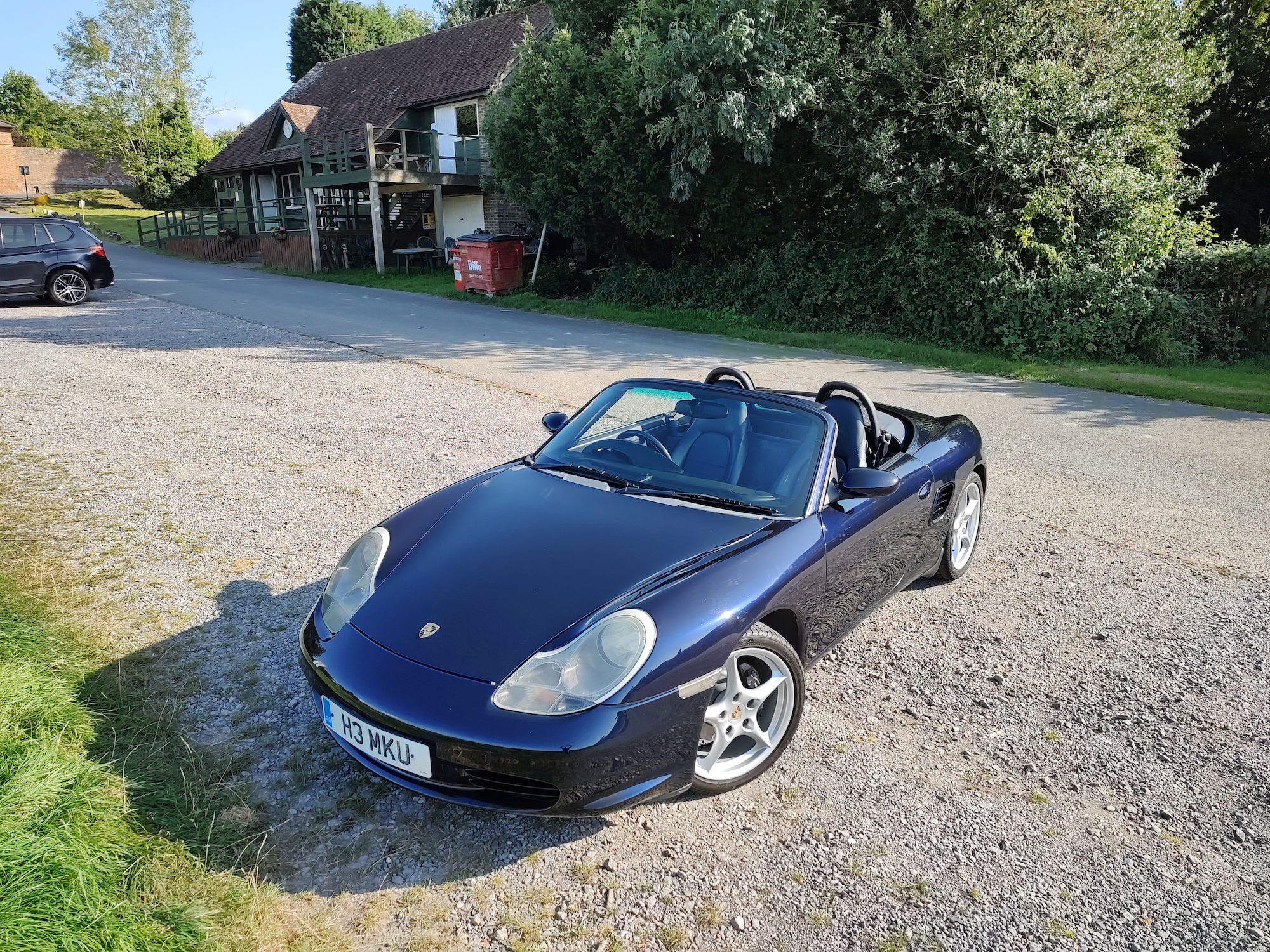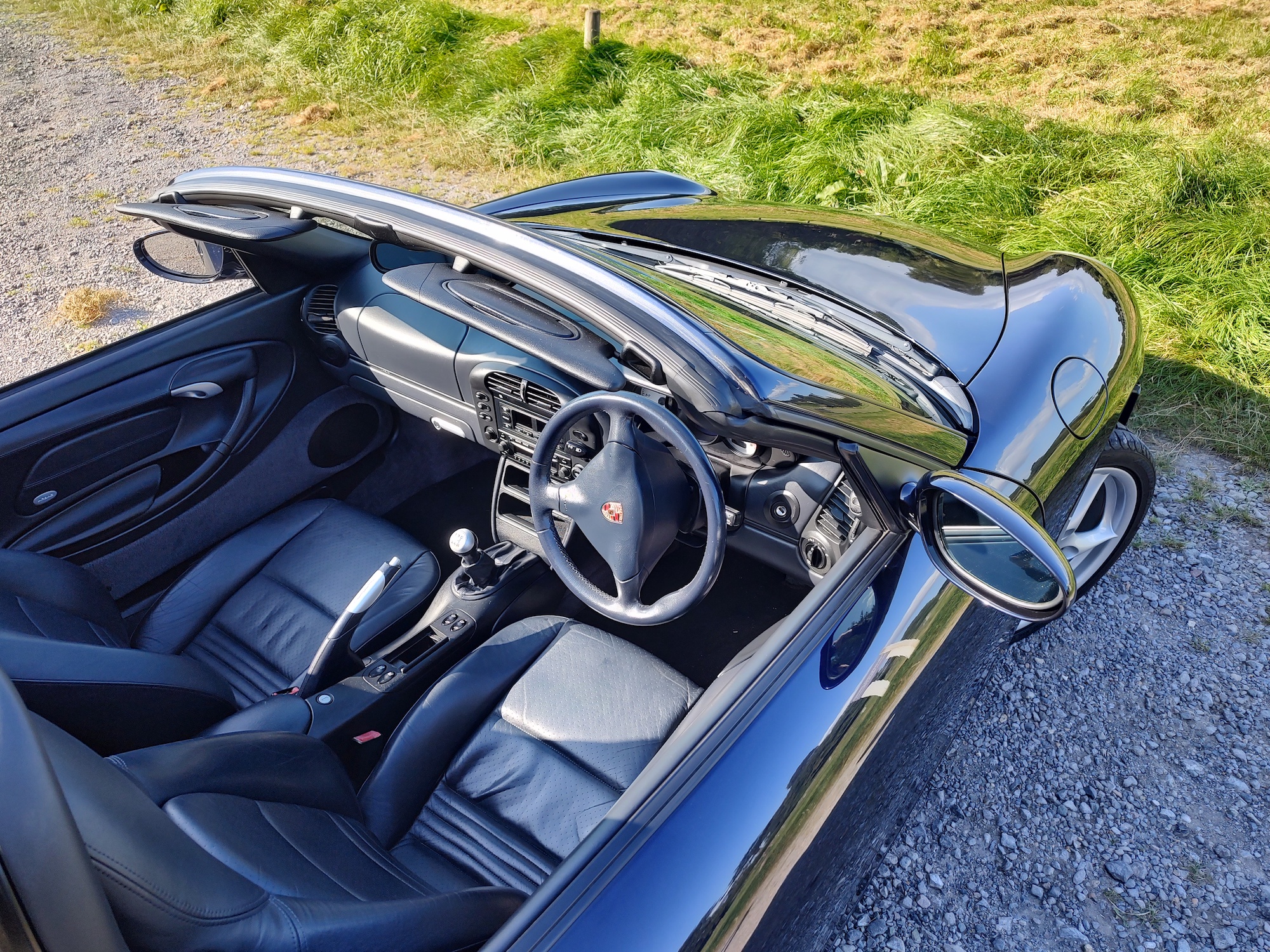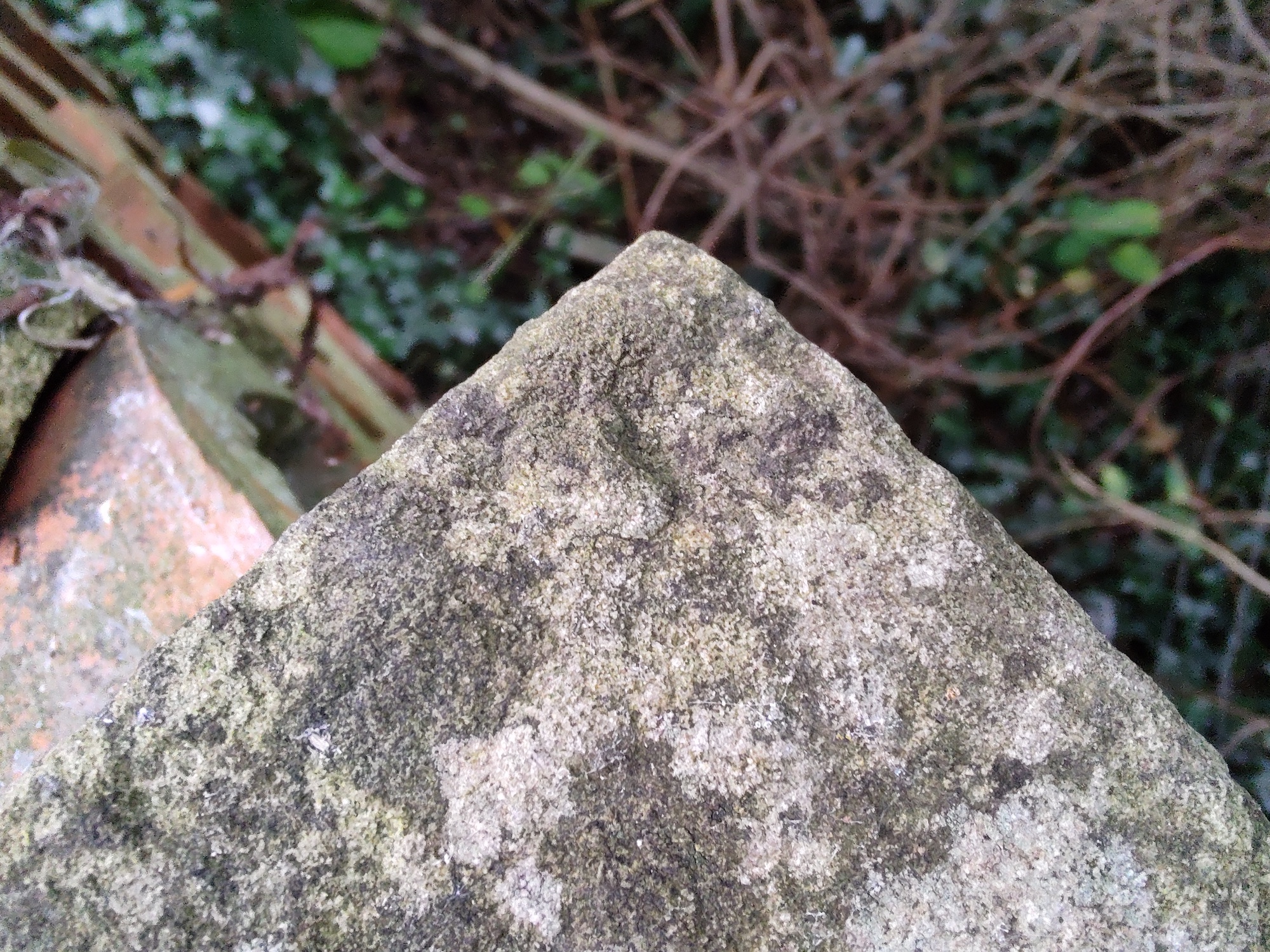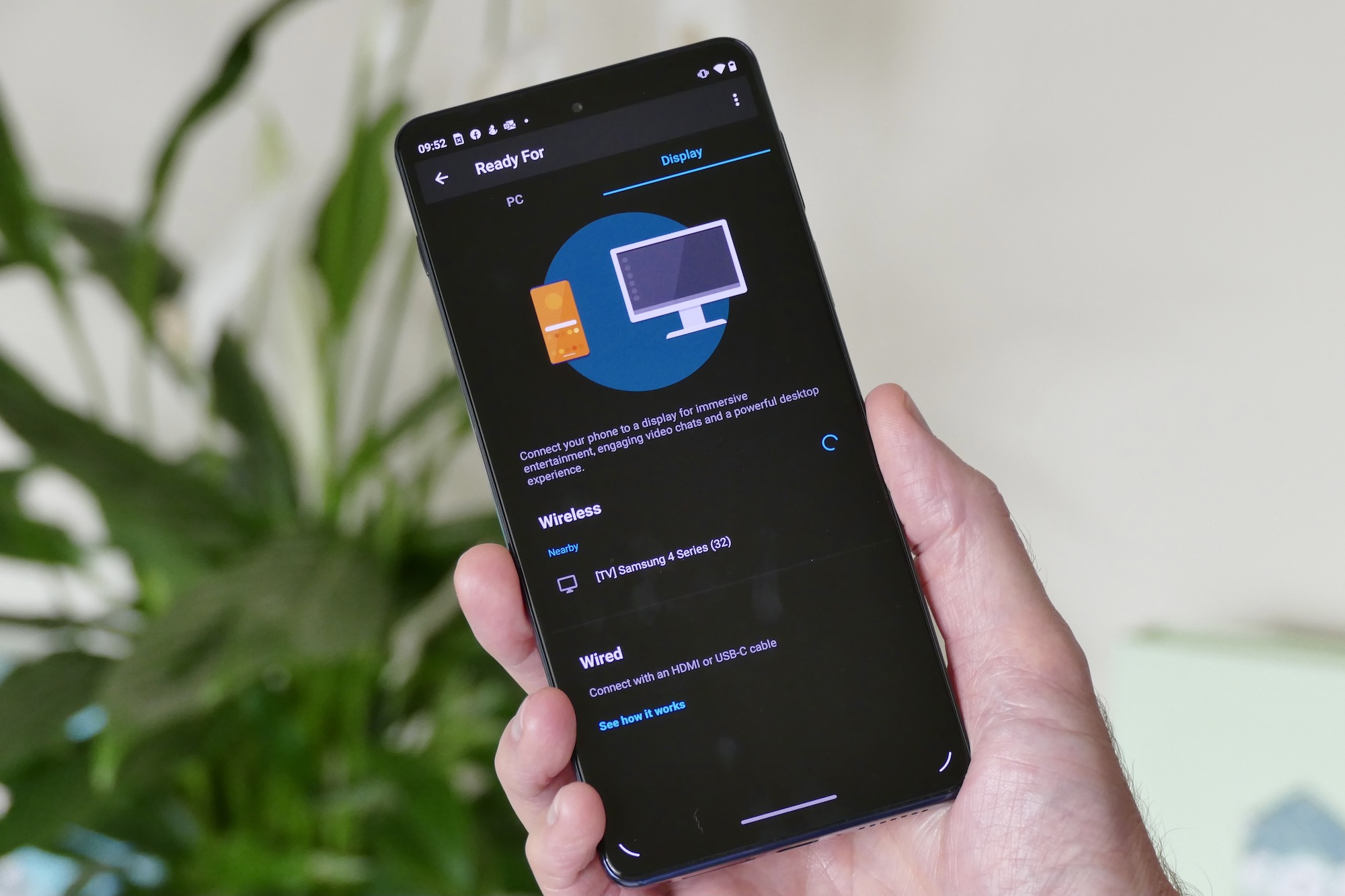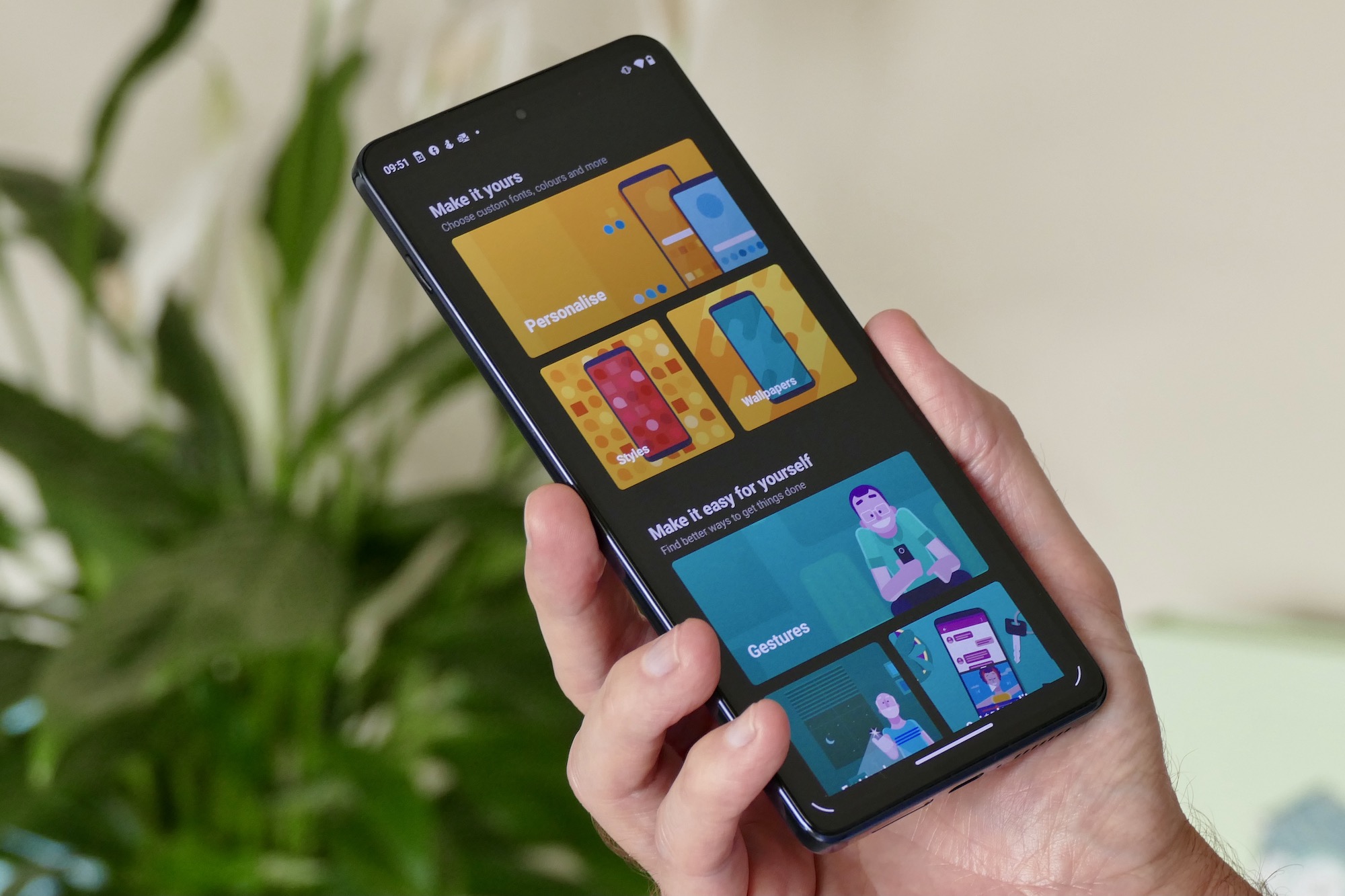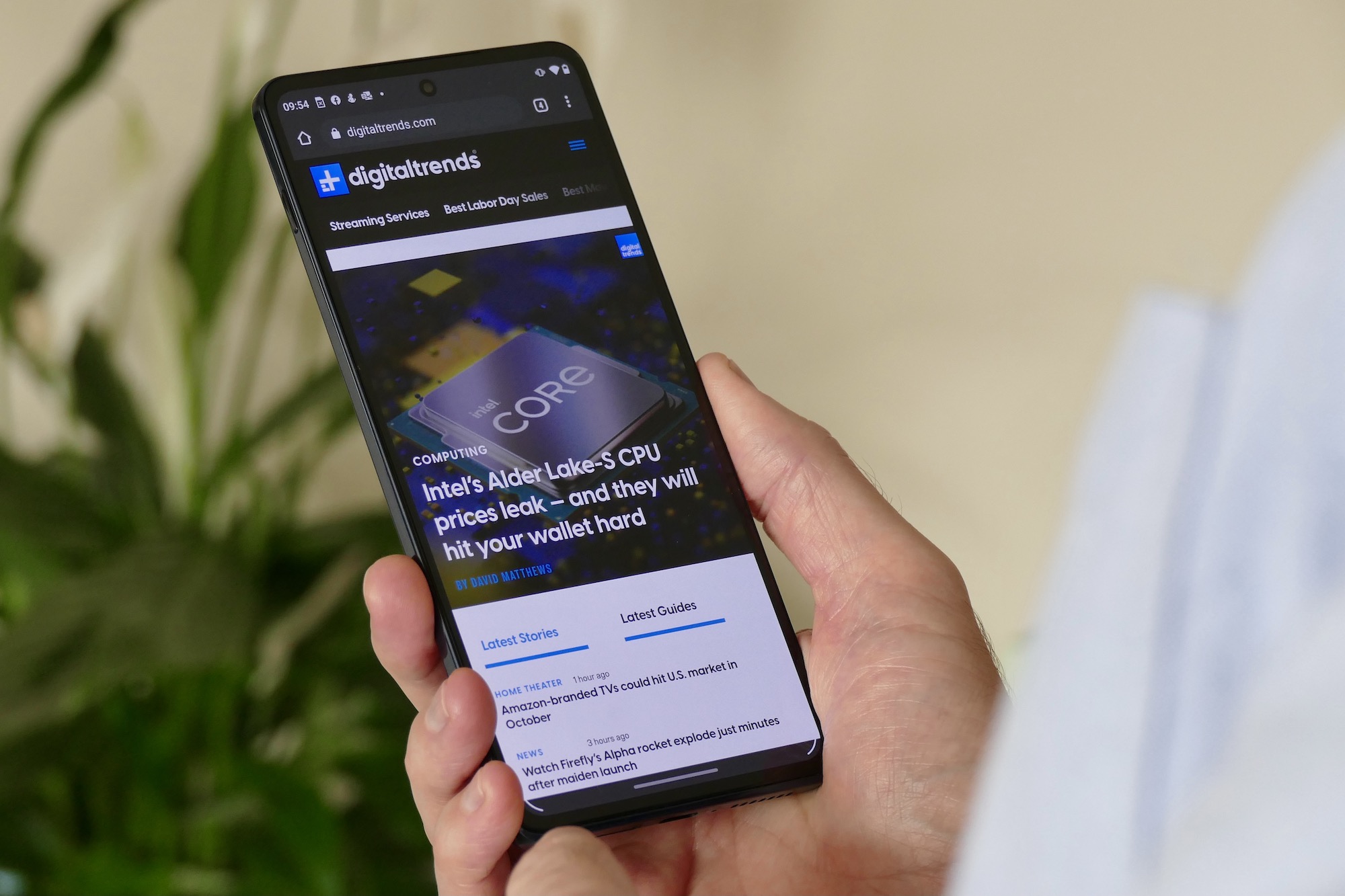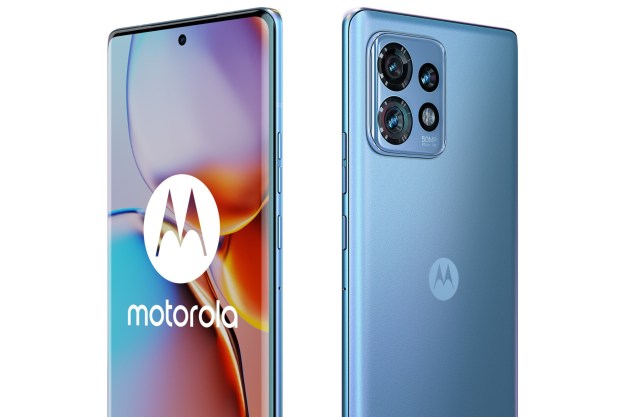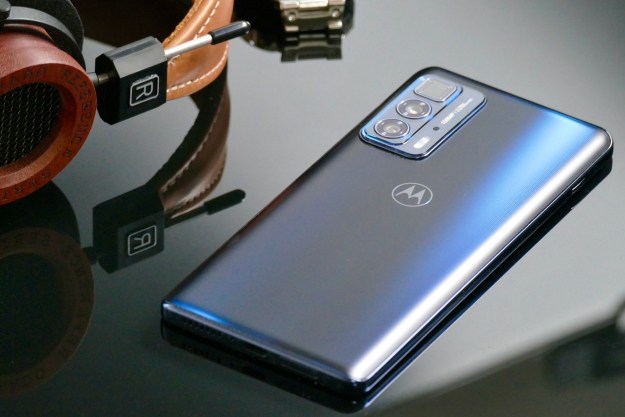
“The Motorola Moto Edge 20 Pro doesn't make the most of its specification so it ends up being distinctly average, and without an eye-catching design, the reliable software and good battery life just aren't enough to elevate it beyond this point.”
- Easy to use, reliable software
- Good battery life
- High refresh rate screen
- Periscope zoom on the camera
- No wireless charging
- Inconsistent camera
- Mono speaker
I remember reviewing the Moto Edge in mid-2020 and really liking the design and screen, which made me excited to try the new Moto Edge 20 Pro. However, it seems Motorola has decided to move away from almost everything that made the previous model a winner, and head down average street instead. It then put the price up for good measure. It has a lot of work to do to impress, in other words.
Before we go into too much detail it’s worth talking about Motorola’s naming and marketing of the latest Moto Edge series. In the U.S. you can only buy the Moto Edge (2021), which everywhere else seems to be called the Moto Edge 20. The Moto Edge 20 Pro we’re reviewing here is a higher-spec version of that phone, which is currently available in the U.K.
With that cleared up, let’s talk about the Moto Edge 20 Pro.
Design
The Motorola Moto Edge 20 Pro may be the highest specification model in the new Edge range, but don’t think that automatically makes it a jaw-dropper when it comes to design. It shares the same work-a-day, functional but uninspired ethos seen on the company’s affordable phones, with nothing that will make you fall for the phone in any way. I feel nothing for the Moto Edge 20 Pro when I look at it, which to some won’t be an issue, but to others, it will push them into the waiting arms of OnePlus, Realme, or Samsung.

Its chassis is made from aluminum alloy and Gorilla Glass 5 covers the screen and the rear panel, so it has the right credentials, but the flat screen makes it look old, and the slab sides make it uncomfortable to grip. Worse, they help the Moto Edge 20 Pro pull off an impressive trick of feeling thicker than the 8mm body actually suggests it should be. There is nothing pretty about putting a square camera lens above two circular ones either.
There are a few odd design decisions too. The fast fingerprint sensor is set in the power key rather than under the display, presumably cutting down on overall costs, but it’s placed quite high on the body and may not fall naturally under your thumb if you have small hands. A Google Assistant button is present on the opposite side, but right at the top of the chassis. This means I haven’t pressed it by accident, but as I’ve also never pressed it intentionally either, I question why it’s there at all.

On the positive side, the Moto Edge 20 Pro is light at 185 grams, plus there’s a vegan leather model available in addition to the Midnight Blue version seen in our photos, which may give the phone more personality. Otherwise, there’s not much here that inspires me to pick up the Moto Edge 20 Pro, especially when beauties like the OnePlus Nord 2 and Samsung Galaxy A52 5G exist.
Screen and audio
Motorola hasn’t spared anything when it comes to the screen’s specification. It’s a 6.7-inch OLED panel with a 2400 x 1080 pixel resolution, a 144Hz refresh rate, and HDR10+ support. The 19.5:9 aspect ratio makes it wider than the 20:9 aspect ratio on the 6.7-inch OnePlus 9 Pro. It spends most of its time at maximum brightness, but I’ve still been able to see it outside on bright days without a problem.

Watching video on the phone revealed the tone is dialed down too much for my personal taste. It’s not as vibrant or full of life and color as the OnePlus Nord 2’s screen and watching the overcast and wet weather conditions in Carfection’s Ferrari Roma review emphasizes its slightly dull characteristic. There’s no setting to alter the screen’s performance, aside from a Normal or Saturated color mode.

It’s certainly not bad at all, and the warmer tone benefits skin for example, but it’s just not such an eye-catching performer as some of the competition. It’s let down more by a mono speaker which although powerful, doesn’t have the tone, bass, or enjoyment delivered by a good stereo setup which is common on other similarly priced smartphones. Screen responsiveness is a little strange too, with the screen sometimes recognizing up-and-down swipes as a left-to-right swipe, which is annoying when using the phone with one hand. The 144Hz refresh rate is very welcome, but I don’t notice a difference between it and a 120Hz screen.
Camera
All the Motorola Moto Edge phones released this year — the Edge (2021)/Edge 20, Edge 20 Lite, and Edge 20 Pro — have 108-megapixel main cameras, but here on the Pro it’s joined by a 16MP wide-angle camera and an 8MP periscope telephoto camera with a 5x optical zoom. This makes the Edge 20 Pro quite unusual, with periscope zoom cameras rarely being used outside of very high-end phones like the Samsung Galaxy S21 Ultra.

The photos it takes are inconsistent, and for every few good photos, it takes one that’s pretty poor, especially in low light. There’s a substantial difference in color balance and dynamic range between the main and wide-angle cameras. Shooting at 5x zoom takes advantage of the optical image stabilization, and the results are better than a 5x digital zoom by showing more detail and a better dynamic range, but it doesn’t come close to the Galaxy S21 Ultra. Motorola touts a 50x Super Zoom mode, but it really shouldn’t have done as there’s no stabilization at all so the image in the viewfinder moves about constantly. When you do snap a photo, you get a lovely, pixelated approximation of the subject.
Low light is surprisingly bad, as even in shaded early morning conditions the f/1.9 aperture 108MP camera introduced blur where most other cameras would have no issues. There’s a macro mode with fixed focus that can make it hard to take a decent photo, 8K video recording at 24 frames per second, and a Dual Capture mode that uses both the front and rear cameras to shoot video at the same time. The 32MP selfie camera takes pleasant photos with natural skin tones, even with the Beauty Mode switched on.
The Moto Edge 20 Pro’s camera is typically Motorola. It provides plenty of features and some desirable tech, but the execution isn’t good enough to best take advantage of them.
Software and performance
The Moto Edge 20 Pro uses the Qualcomm Snapdragon 870 processor, which is a warmed-over version of the older Snapdragon 865 processor and provides greater efficiency. The Snapdragon 870 may not be the top Snapdragon 888, but you probably won’t notice much difference day-to-day. I’ve played Asphalt 9: Legends without a problem, it’s very smooth and fast, plus I’ve multi-tasked as usual, something undoubtedly helped by the 12GB of RAM inside.

Android 11 is installed and like most of its phones, Motorola doesn’t add too much over the top, meaning it looks similar to Android on a Google Pixel phone. There are some gesture controls like shaking the phone to activate the flashlight. Peek Display replaces the usual, and preferred, always-on screen with a tap-to-wake system. I like the way you can see more detail from notifications by tapping and holding icons on it, but I’d much prefer the basic information to be shown all the time. Apps have worked without fault, notifications are delivered as you’d expect, and the phone performed as normal throughout my time with it.
Motorola is also pushing its desktop mode, which it calls Ready For, on the Moto Edge 20 Pro, to the point where it includes the necessary USB Type-C to HDMI cable to use it in the box. It’s a nice touch. Ready For works wirelessly too, if you have a compatible screen. It works much like Samsung DeX, in that it displays a Windows-like home screen designed to increase productivity. Also, like DeX, it may not work with all Smart TVs (it didn’t connect to my Sony Android TV, for example) and to take full advantage of it you will need a Bluetooth keyboard and mouse, plus a controller if you want to play games.
Calls on the Moto Edge 20 Pro are decent, but I didn’t think the speaker was very good. Voices weren’t as clear as I expected, and background noise on the caller’s end seemed to interfere more than normal. This is a 5G phone, if you have coverage in your area, with dual 5G SIM slots, plus there’s Wi-Fi 6 onboard and NFC for Google Pay too. Little things aside, the Moto Edge 20 Pro gives you everything you could want from a high-end phone — cleanly designed, reliable software, and plenty of performance — with features like Ready For that may be helpful to some.
Battery
The 4,500mAh battery is a little smaller than we’ve come to expect from smartphones recently, but if you don’t push the phone very hard it only sips power. On a few very light use days it stretched out to three days for me, which very few other phones do. Play games and watch video and this turns into two days of use, which is still good.

Motorola’s 30W TurboPower charger is included in the box, and while a 10-minute zap of power will apparently deliver nine hours of use, according to Motorola, it doesn’t reach 100% as quickly as the fast chargers included with the OnePlus Nord 2 or the Realme GT. The Moto Edge 20 Pro doesn’t have wireless charging, which is unfortunate.
Price and availability
The Motorola Moto Edge 20 Pro costs 650 British pounds, or about $900. It’s available to buy now in the U.K. through Motorola’s online store. You’d have to import one to own it in the U.S., and there doesn’t seem to be any immediate plans for Motorola to officially introduce it.
Our take
There’s nothing wrong with being distinctly average, which is a good thing because it’s something that the Moto Edge 20 Pro excels at. It has a design that doesn’t hurt your eyes or excite your senses, a decent camera that takes photos that will never make you say wow, and a pretty screen that can’t quite match the competition. Good battery life and reliable software aren’t enough to elevate it beyond this.
I’ve not had any major problems with the phone at all, but the little annoyances amplify without much to make it worth the trouble. Why Motorola abandoned the cool design and cascading screen from the Moto Edge (2020) is a mystery. This may be Motorola’s top smartphone released so far this year, but it hasn’t really been given the red carpet treatment, and this is a problem because Motorola hasn’t set the price in average territory. Phones that don’t seem average at all are yours for a chunk of money less than it costs to pick up the Moto Edge 20 Pro. At a time when competition in all areas of the phone world is incredibly fierce, average quickly becomes forgettable.
Is there a better alternative?
Yes, and for less money. If you’re in the U.K. the OnePlus Nord 2 costs 400 British pounds, or about $550, has a visually prettier screen, a more attractive design, a capable camera, and fast charging. You miss out on the periscope zoom, but it’s not worth the considerable extra you pay to get it. The Samsung Galaxy A52 5G is $500 and officially available in the U.S. and the U.K., and is similarly excellent.
Alternatively, the Realme GT is worth a look at 450 British pounds, or about $620, and has a Snapdragon 888 chip, fast charging, and a decent screen and camera. The Google Pixel 5a at $450 has its advantages too, with a good camera, IP67 rating, and great software. It misses out on the high refresh rate screen, but it’s a lot cheaper.
The OnePlus 9 Pro costs a little more, $969 or 829 British pounds, and if you can afford it is a better buy. The Hasselblad camera has received software updates improving it greatly since launch, it has the latest Qualcomm processor, excellent software with longer support, and a mature design.
How long will it last?
Motorola intends to deliver two major Android software updates and two years of bimonthly security updates to the Moto Edge 20 Pro. The phone has an IP52 splash resistance rating meaning it’ll be fine in the rain, but not so much if you drop it in the bath. It comes with a basic translucent TPU case in the box for additional drop protection. You can safely buy the Moto Edge 20 Pro and expect it to last two years.
Should you buy one?
No. It can’t quite deliver on the promise of its specification, and there are better choices for less money.
Editors' Recommendations
- Motorola just announced three new phones, and I need them right now
- The best Motorola phones in 2024: which one should you buy?
- A new Motorola phone just leaked, and it could beat the Galaxy S24 Ultra
- Motorola just launched 3 new Android phones, and they look incredible
- Forget the Pixel 7 and Galaxy S23 — the Motorola Edge 40 Pro is here








